目录
前言
从WinForm转向WPF开发时,最需要转变的思维就是布局方式。WPF提供了更加灵活和强大的布局系统,可以轻松实现自适应布局设计。本文将详细介绍WPF中常用的布局控件及其应用。
Grid布局 - 最常用的布局控件
Grid是WPF中最灵活的布局控件,类似于HTML中的表格布局。它允许你定义行和列,并可以设置比例或固定大小。
基础Grid示例
XML<Grid>
<Grid.RowDefinitions>
<!-- 第一行高度为Auto,根据内容自动调整 -->
<RowDefinition Height="Auto"/>
<!-- 第二行高度为* ,占用剩余所有空间 -->
<RowDefinition Height="*"/>
<!-- 第三行固定高度50 -->
<RowDefinition Height="50"/>
</Grid.RowDefinitions>
<Grid.ColumnDefinitions>
<!-- 第一列宽度占比1 -->
<ColumnDefinition Width="*"/>
<!-- 第二列宽度占比2 -->
<ColumnDefinition Width="2*"/>
</Grid.ColumnDefinitions>
<!-- 放置在第0行第0列的按钮 -->
<Button Grid.Row="0" Grid.Column="0" Content="按钮1"/>
<!-- 放置在第0行,跨越2列的文本块 -->
<TextBlock Grid.Row="0" Grid.Column="1" Text="标题"/>
<!-- 放置在第1行,跨越2列的列表 -->
<ListBox Grid.Row="1" Grid.ColumnSpan="2">
<ListBoxItem>项目1</ListBoxItem>
<ListBoxItem>项目2</ListBoxItem>
</ListBox>
</Grid>
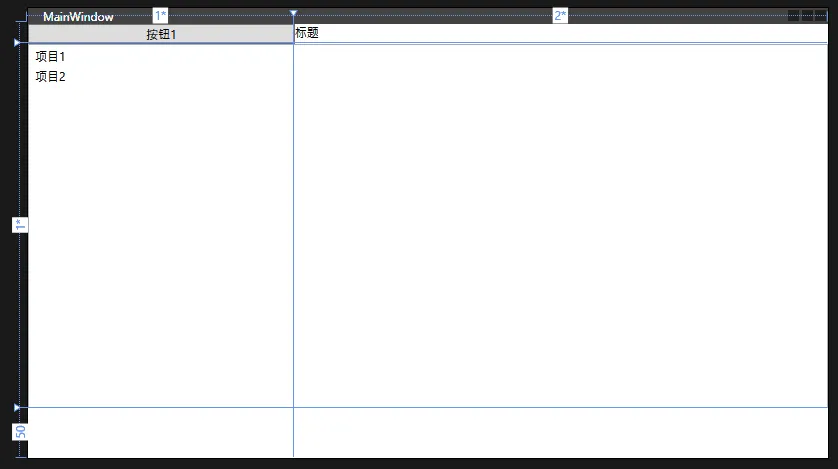
StackPanel - 堆叠式布局
StackPanel是一个简单但实用的布局控件,可以将子元素垂直或水平排列。
StackPanel示例
XML<StackPanel>
<!-- 垂直排列的StackPanel -->
<StackPanel Orientation="Vertical" Margin="10">
<Button Content="按钮1" Margin="0,0,0,5"/>
<Button Content="按钮2" Margin="0,0,0,5"/>
<Button Content="按钮3" Margin="0,0,0,5"/>
</StackPanel>
<!-- 水平排列的StackPanel -->
<StackPanel Orientation="Horizontal" Margin="10">
<TextBlock Text="姓名:" VerticalAlignment="Center"/>
<TextBox Width="100" Margin="5,0"/>
<Button Content="确定"/>
</StackPanel>
</StackPanel>
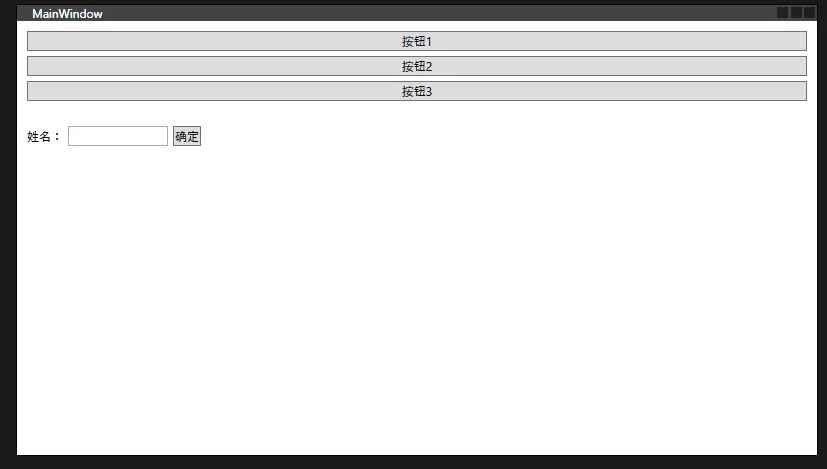
DockPanel - 停靠式布局
DockPanel允许子元素停靠在容器的四边或填充剩余空间。
DockPanel示例
XML<DockPanel LastChildFill="True">
<!-- 顶部工具栏 -->
<ToolBar DockPanel.Dock="Top">
<Button Content="新建"/>
<Button Content="保存"/>
</ToolBar>
<!-- 左侧导航栏 -->
<ListView DockPanel.Dock="Left" Width="200">
<ListViewItem>菜单项1</ListViewItem>
<ListViewItem>菜单项2</ListViewItem>
</ListView>
<!-- 底部状态栏 -->
<StatusBar DockPanel.Dock="Bottom">
<StatusBarItem>
<TextBlock Text="就绪"/>
</StatusBarItem>
</StatusBar>
<!-- 主内容区域(自动填充剩余空间) -->
<Grid>
<TextBlock Text="主要内容区域"
HorizontalAlignment="Center"
VerticalAlignment="Center"/>
</Grid>
</DockPanel>
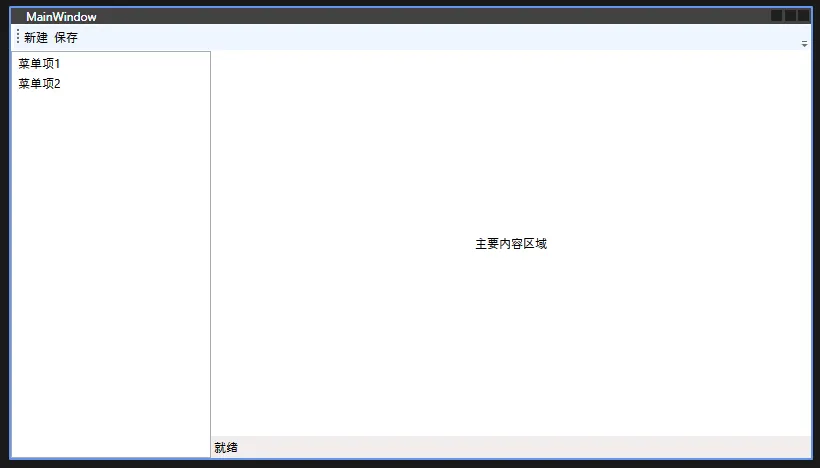
WrapPanel - 自动换行布局
WrapPanel会在容器宽度不足时自动换行显示子元素。
WrapPanel示例
XML<WrapPanel Orientation="Horizontal">
<!-- 这些按钮会在空间不足时自动换行 -->
<Button Content="按钮1" Width="100" Height="30" Margin="5"/>
<Button Content="按钮2" Width="100" Height="30" Margin="5"/>
<Button Content="按钮3" Width="100" Height="30" Margin="5"/>
<Button Content="按钮4" Width="100" Height="30" Margin="5"/>
<Button Content="按钮5" Width="100" Height="30" Margin="5"/>
</WrapPanel>
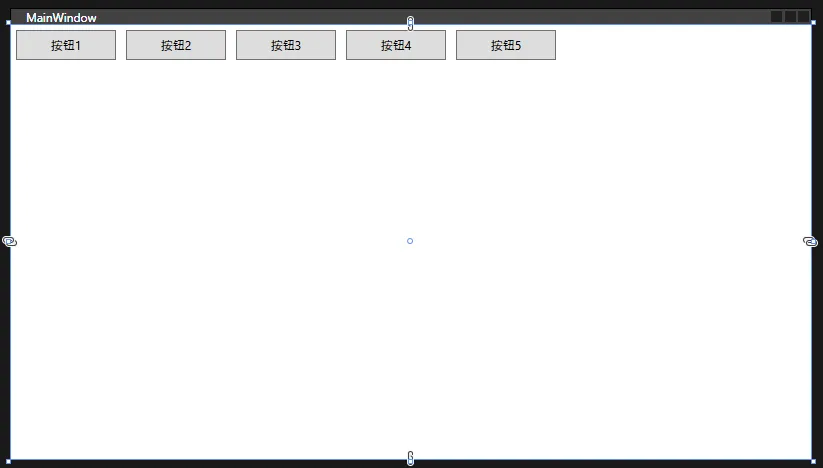
综合实例 - 自适应布局的应用程序框架
下面是一个结合多种布局控件的完整示例:
XML<Application x:Class="AppAdaptiveLayout.App"
xmlns="http://schemas.microsoft.com/winfx/2006/xaml/presentation"
xmlns:x="http://schemas.microsoft.com/winfx/2006/xaml"
xmlns:local="clr-namespace:AppAdaptiveLayout"
StartupUri="MainWindow.xaml">
<Application.Resources>
<!-- 颜色资源 -->
<SolidColorBrush x:Key="PrimaryColor" Color="#1976D2"/>
<SolidColorBrush x:Key="SecondaryColor" Color="#2196F3"/>
<SolidColorBrush x:Key="BackgroundColor" Color="#303030"/>
<SolidColorBrush x:Key="SidebarColor" Color="#424242"/>
<!-- 菜单按钮样式 -->
<Style x:Key="MenuButtonStyle" TargetType="RadioButton">
<Setter Property="Height" Value="45"/>
<Setter Property="Background" Value="Transparent"/>
<Setter Property="Foreground" Value="White"/>
<Setter Property="BorderThickness" Value="0"/>
<Setter Property="HorizontalContentAlignment" Value="Left"/>
<Setter Property="FocusVisualStyle" Value="{x:Null}"/>
<Setter Property="Template">
<Setter.Value>
<ControlTemplate TargetType="RadioButton">
<Grid Background="Transparent">
<!-- 选中指示器 -->
<Border x:Name="SelectionIndicator"
Width="3"
HorizontalAlignment="Left"
Background="{StaticResource PrimaryColor}"
Opacity="0"/>
<!-- 按钮主体 -->
<Border x:Name="MainBorder"
Background="{TemplateBinding Background}"
Margin="3,0">
<Grid Margin="20,0">
<Grid.ColumnDefinitions>
<ColumnDefinition Width="25"/>
<ColumnDefinition Width="*"/>
</Grid.ColumnDefinitions>
<!-- 图标位置 -->
<ContentPresenter Grid.Column="0"
x:Name="Icon"
Content="{Binding Tag, RelativeSource={RelativeSource TemplatedParent}}"
HorizontalAlignment="Center"
VerticalAlignment="Center"/>
<!-- 文本内容 -->
<ContentPresenter Grid.Column="1"
Content="{TemplateBinding Content}"
HorizontalAlignment="{TemplateBinding HorizontalContentAlignment}"
VerticalAlignment="Center"
Margin="10,0,0,0"/>
</Grid>
</Border>
</Grid>
<ControlTemplate.Triggers>
<Trigger Property="IsMouseOver" Value="True">
<Setter TargetName="MainBorder" Property="Background" Value="#454545"/>
</Trigger>
<Trigger Property="IsPressed" Value="True">
<Setter TargetName="MainBorder" Property="Background" Value="{StaticResource PrimaryColor}"/>
</Trigger>
<Trigger Property="IsChecked" Value="True">
<Setter TargetName="MainBorder" Property="Background" Value="{StaticResource PrimaryColor}"/>
<Setter TargetName="SelectionIndicator" Property="Opacity" Value="1"/>
</Trigger>
</ControlTemplate.Triggers>
</ControlTemplate>
</Setter.Value>
</Setter>
</Style>
</Application.Resources>
</Application>
XML<Window x:Class="AppAdaptiveLayout.MainWindow"
xmlns="http://schemas.microsoft.com/winfx/2006/xaml/presentation"
xmlns:x="http://schemas.microsoft.com/winfx/2006/xaml"
xmlns:d="http://schemas.microsoft.com/expression/blend/2008"
xmlns:mc="http://schemas.openxmlformats.org/markup-compatibility/2006"
xmlns:local="clr-namespace:AppAdaptiveLayout"
mc:Ignorable="d"
Title="MainWindow" Height="450" Width="800"
Background="#F5F6F7">
<Window.Resources>
<!-- 定义颜色 -->
<SolidColorBrush x:Key="PrimaryColor" Color="#1976D2"/>
<SolidColorBrush x:Key="SecondaryColor" Color="#2196F3"/>
<SolidColorBrush x:Key="BackgroundColor" Color="#303030"/>
<SolidColorBrush x:Key="SidebarColor" Color="#424242"/>
</Window.Resources>
<Grid Background="{StaticResource BackgroundColor}">
<Grid.ColumnDefinitions>
<ColumnDefinition Width="200"/>
<ColumnDefinition Width="*"/>
</Grid.ColumnDefinitions>
<!-- 左侧导航栏 -->
<Border Grid.Column="0"
Background="{StaticResource SidebarColor}"
BorderBrush="#505050"
BorderThickness="0,0,1,0">
<DockPanel>
<!-- 顶部Logo -->
<TextBlock DockPanel.Dock="Top"
Text="MODERN WPF"
Foreground="White"
FontSize="24"
Margin="20,20,20,40"
HorizontalAlignment="Left"/>
<!-- 导航菜单 -->
<StackPanel>
<RadioButton Style="{StaticResource MenuButtonStyle}"
Content="Dashboard"
GroupName="NavMenu"
IsChecked="True"/>
<RadioButton Style="{StaticResource MenuButtonStyle}"
Content="Projects"
GroupName="NavMenu"/>
<RadioButton Style="{StaticResource MenuButtonStyle}"
Content="Messages"
GroupName="NavMenu"/>
<RadioButton Style="{StaticResource MenuButtonStyle}"
Content="Analytics"
GroupName="NavMenu"/>
<RadioButton Style="{StaticResource MenuButtonStyle}"
Content="Settings"
GroupName="NavMenu"/>
</StackPanel>
</DockPanel>
</Border>
<!-- 主内容区域 -->
<Grid Grid.Column="1">
<Grid.RowDefinitions>
<RowDefinition Height="60"/>
<RowDefinition Height="*"/>
</Grid.RowDefinitions>
<!-- 顶部工具栏 -->
<Border Grid.Row="0"
Background="#383838"
BorderBrush="#505050"
BorderThickness="0,0,0,1">
<StackPanel Orientation="Horizontal"
Margin="20,0"
VerticalAlignment="Center">
<TextBlock Text="Dashboard"
Foreground="White"
FontSize="20"/>
</StackPanel>
</Border>
<!-- 内容区域 -->
<Grid Grid.Row="1" Margin="20">
<ContentControl x:Name="MainContent"/>
</Grid>
</Grid>
</Grid>
</Window>
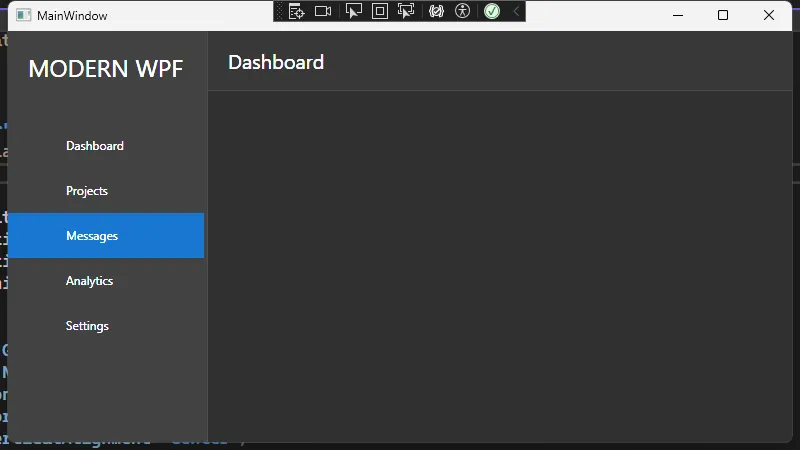
布局设计的最佳实践
- 合理使用Grid
- 使用Grid作为主要布局容器
- 善用行列比例设置(
*、Auto、固定值) - 适当使用Grid嵌套来处理复杂布局
- 正确选择布局控件
- StackPanel适用于简单的线性布局
- DockPanel适合需要停靠的界面框架
- WrapPanel适用于需要自动换行的场景
- Grid适合复杂的表格式布局
- 注意性能考虑
- 避免过深的布局嵌套
- 合理使用UpdateLayout和Measure/Arrange
- 适当使用虚拟化面板(VirtualizingStackPanel)
- 响应式设计
- 使用比例而不是固定尺寸
- 合理设置最小/最大尺寸
- 使用Grid的自动行列定义
结论
WPF的布局系统相比WinForm更加灵活和强大,掌握这些布局控件的使用可以帮助我们创建出更好的用户界面。在实际开发中,需要根据具体需求选择合适的布局控件,并遵循最佳实践来确保应用程序的可维护性和性能。
本文作者:技术老小子
本文链接:
版权声明:本博客所有文章除特别声明外,均采用 BY-NC-SA 许可协议。转载请注明出处!
目录